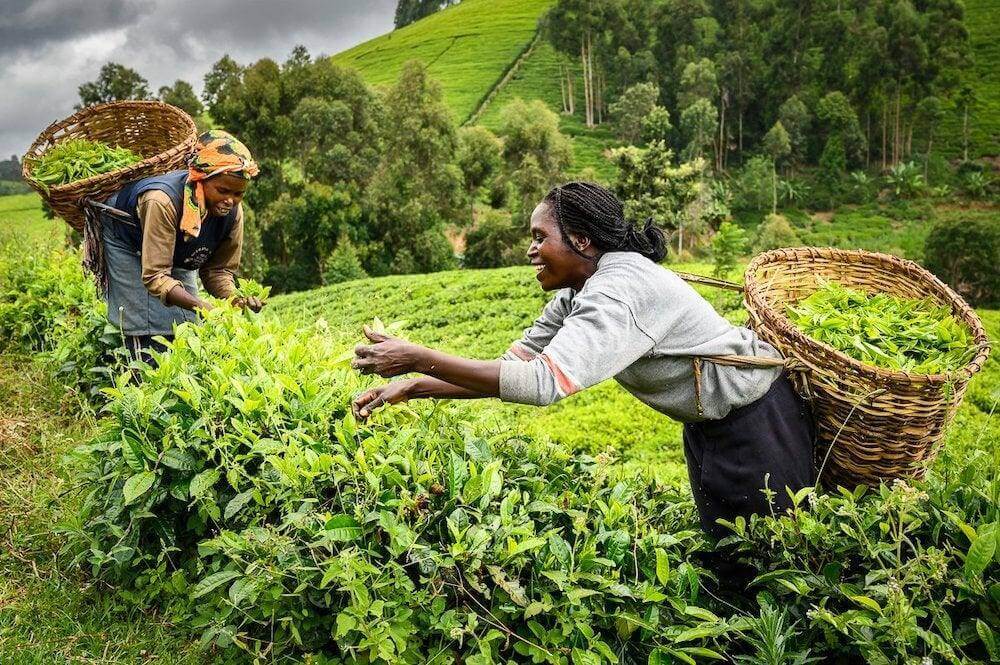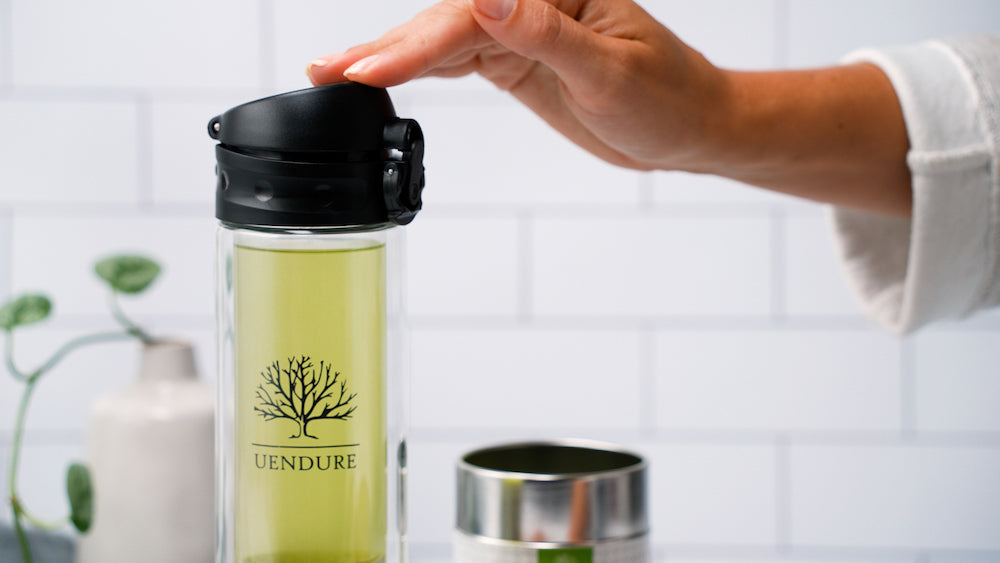Save 15% when you buy the Original Bottle Bundle!

What is Purple Tea?
Do you enjoy fruits and vegetables that have purple and blue colors? If so, then you should consider drinking purple tea. It has the most antioxidants compared to any other tea in existence. That makes it one of the healthiest teas ever produced. Adding to its appeal, purple tea brews into a lovely cup of purple-colored liquid, and when you squeeze a bit of lemon it magically turns into a pretty pinkish hue.
An Overview of Purple Tea
If you have never heard of purple tea before, that would be understandable because it is one of the newer teas to hit the marketplace. Purple tea is a lot different than traditional teas like green tea, black tea, white tea, and yellow tea. It is a cultivar that goes by the technical name of TRFK 306/1.
Kenya is the primary country for producing purple tea, although there is some production in India, Japan, and China.
Purple's Kenyan Origins
Purple tea is often marketed as Kenyan purple tea because it is grown and harvested in Kenya. It is considered to be a specialty tea due to its rarity and unique characteristics. The entire purple tea development process took approximately 25 years to complete.
In 2011, the Tea Research Institute finally allowed for the commercial cultivation of the tea. In the decade since the release, there are a limited number of gardens producing purple tea plants. The Nandi Hills of India produces a lot more purple tea now. These hills have high elevations, making them the perfect place to grow the purple tea plants.
Most people don’t realize that all teas come from the same type of plant, the camellia Sinensis. The differences have to do with the cultivars and how the tea composition changes throughout the production process.
What makes purple tea healthier than other teas?
Purple tea contains anthocyanins...the same powerful antioxidants as purplish and bluish fruits such as blueberries, blackberries, eggplant, purple grapes red cabbage, acai and chokeberries. In fact, purple tea contains very high levels of anthocyanin – 135 times more than regular green tea!
Purple tea includes numerous compounds that present health benefits including polyphenols, EGCG, ECG, GHG, anthocyanins, and caffeine. A few of the things that these compounds help with are weight loss, diabetes, inflammation, and the prevention of serious diseases.
Each type of tea has unique benefits. You might hear a lot of talk about how green tea is a super healthy tea. Health experts rant and rave about green tea because of its high level of EGCG, a natural anti-inflammatory compound found in the tea. It can help reduce inflammation, prevent chronic diseases and assist in weight loss.
What makes purple tea so special is its insanely high level of anthocyanins. These are the pigments found in acai berries, blueberries, chokeberries, and other natural foods with blue and purple colors. They all contribute numerous health benefits for the people who consume them.
Promising Results from Scientific Studies
According to recent research studies, some evidence suggests that purple tea might be the best tea for preventing and treating cancer. Anyone with uterine cancer, breast cancer, lung cancer, or colorectal cancer might want to consider adding purple tea to their daily regimen. Research also shows evidence that purple tea can help with brain function and weight loss too.
About the Caffeine Content
Purple tea does have caffeine content, but not nearly as much as green tea and black tea. If you have caffeine sensitivity, you should brew the purple tea with fewer leaves and then mix the tea in cooler water before consumption. The caffeine effects won’t be as severe.
The Brewing Process for Purple Tea
Brewing instructions are available on the packaging of most purple tea products. Black purple tea usually gets brewed the same way you’d brew regular black tea. Just boil water for a few minutes and then add the tea leaves. Green purple has a similar process, but try to make the water temperature at about 176°F if you can help it.
Just remember always to use purified water or natural spring water when boiling water to brew tea. The teaware should be clean each time you use it. The number of tea leaves to brew will depend on how many cups of water is in the pot. The ratio of leaves to cups of water has to be as perfect as possible. It is the only way to ensure the taste is excellent.
Of course, the easiest way to brew tea is to put the tea leaves into tea filter bags or your favorite tea infuser before steeping them into the boiling water. It is an excellent way to reduce the caffeine content too.
Brewing Tips
- Always use fresh filtered water and try not to re-boil the same water.
- Measure the right amount of tea leaves per cup of water and adjust the ratio if needed. The flavor will greatly depend on this ratio.
- For easy brewing, place tea leaves into an infuser and steep for 2 minutes
- Re-steep the tea leaves as if you were with making any other tea.
Disclaimer: The content featured in this article is for general informational use only. If you have any type of medical condition or need to seek treatment for some health-related issue, then you should consult with a doctor right away. None of the content in this article is meant to treat, diagnose, cure or advise. We do not intend to replace the professional opinion, advice, treatment, or diagnosis of a licensed medical professional. Everyone responds differently to tea products, so what helps one person might not help another person. Teas are not meant to cure any severe medical condition.



a7qhtb
dtuqd3